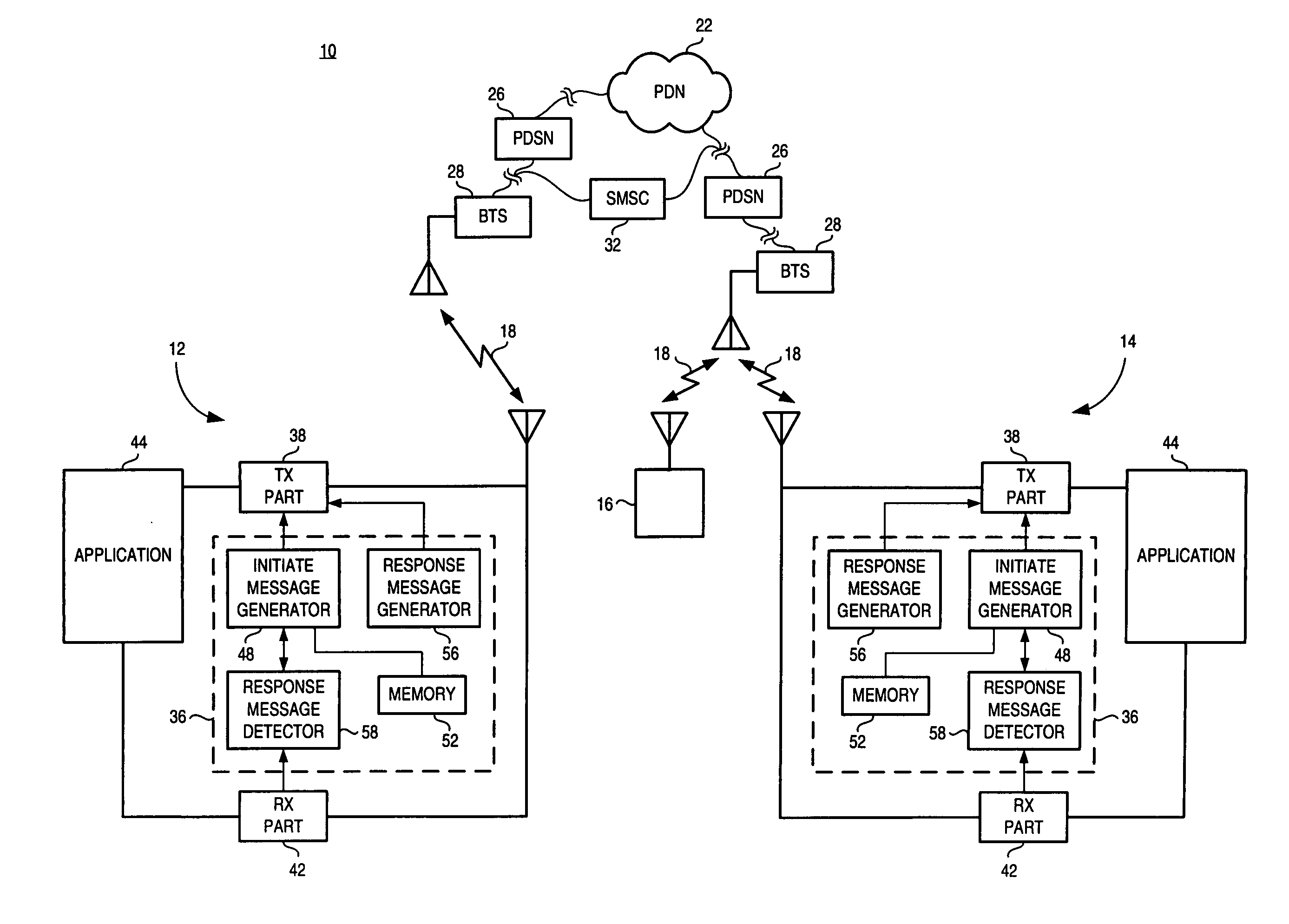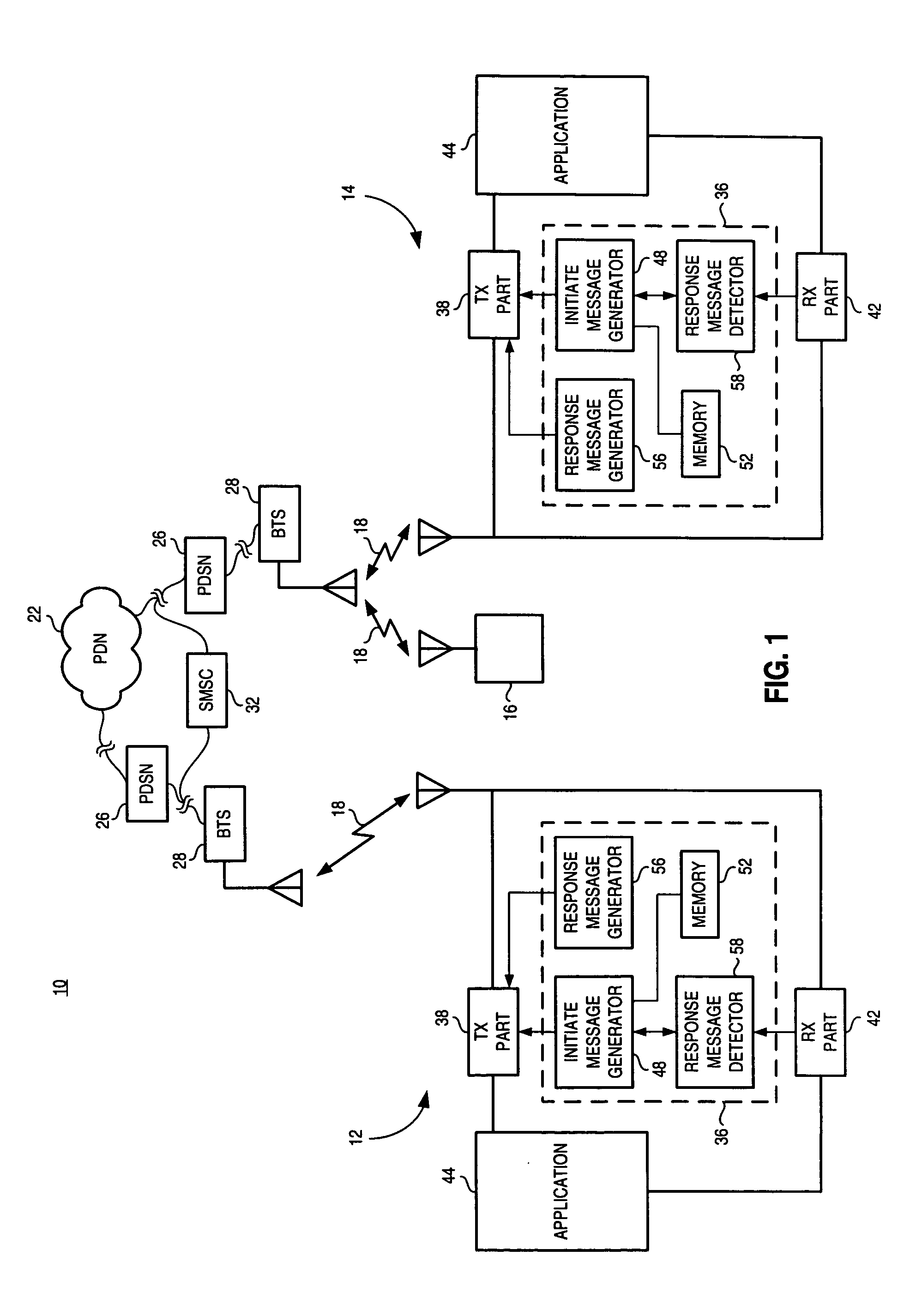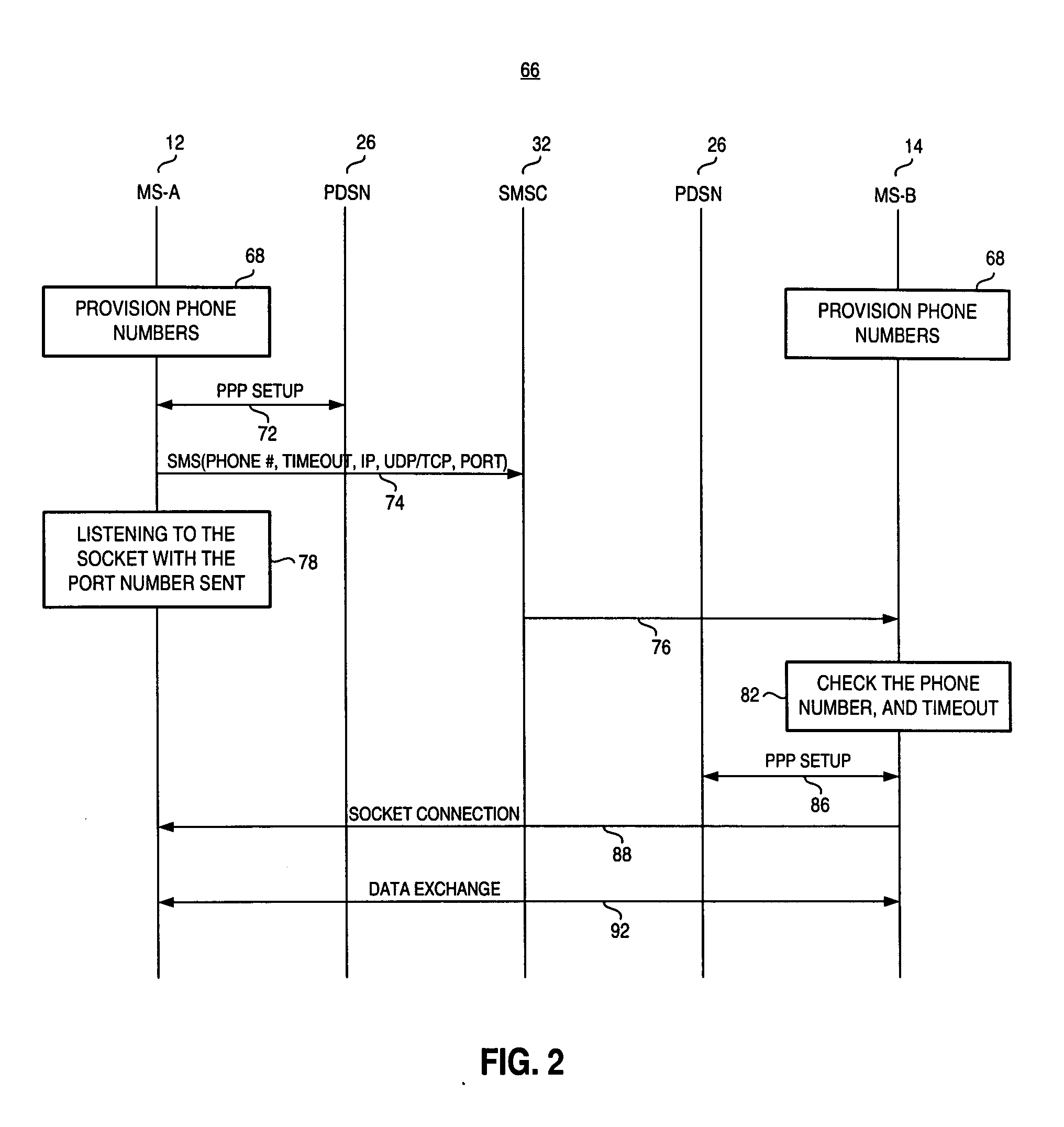Apparatus, and an associated method, for forming direct data connection between applications of a set of mobile stations
- Summary
- Abstract
- Description
- Claims
- Application Information
AI Technical Summary
Benefits of technology
Problems solved by technology
Method used
Image
Examples
Embodiment Construction
[0033] Referring first to FIG. 1, a packet radio communication system, shown generally at 10, provides for effectuation of communication services with mobile stations, of which the mobile stations 12, 14, and 16 are representative. In the exemplary implementation, the communication system forms a cellular communication system that provides for data services, such as instant messaging and interactive gaming. In other implementations, an embodiment of the present invention is implementable in other packet radio communication systems. And, the operation of such a radio communication system is analogously describable with respect to implementation of an embodiment of the present invention in such other type of radio communication system. Accordingly, the following description describes operation of the radio communication system and an embodiment of the present invention operable therein with respect to the radio communication system illustrated in the figure, the description is by way ...
PUM
 Login to View More
Login to View More Abstract
Description
Claims
Application Information
 Login to View More
Login to View More - R&D
- Intellectual Property
- Life Sciences
- Materials
- Tech Scout
- Unparalleled Data Quality
- Higher Quality Content
- 60% Fewer Hallucinations
Browse by: Latest US Patents, China's latest patents, Technical Efficacy Thesaurus, Application Domain, Technology Topic, Popular Technical Reports.
© 2025 PatSnap. All rights reserved.Legal|Privacy policy|Modern Slavery Act Transparency Statement|Sitemap|About US| Contact US: help@patsnap.com



